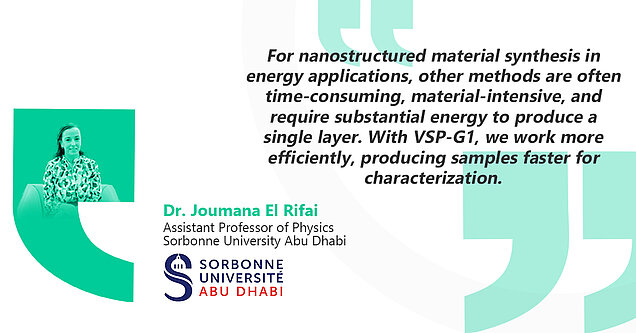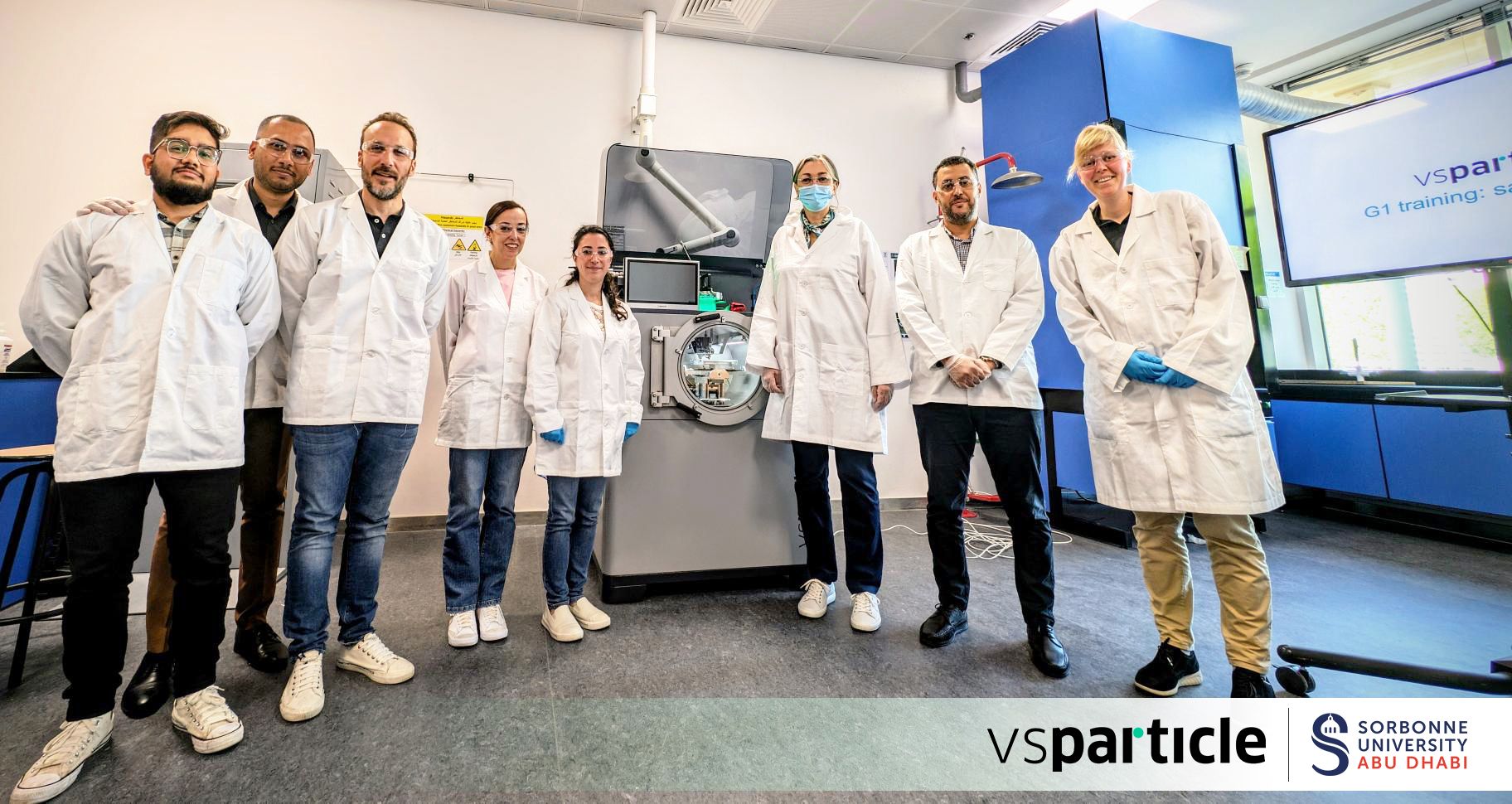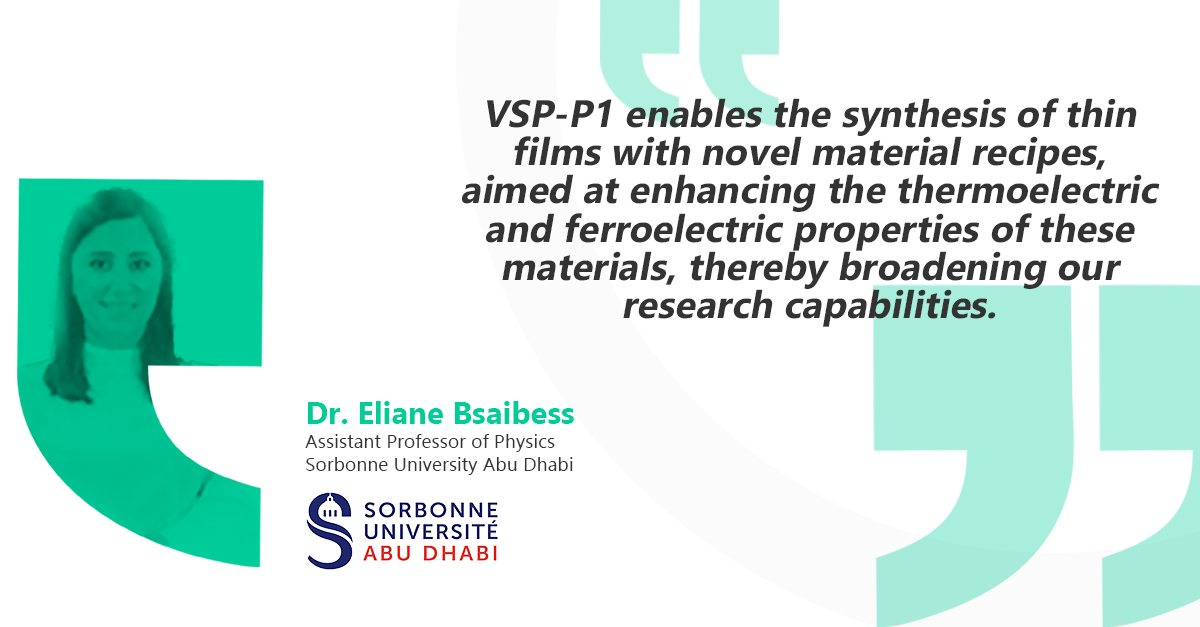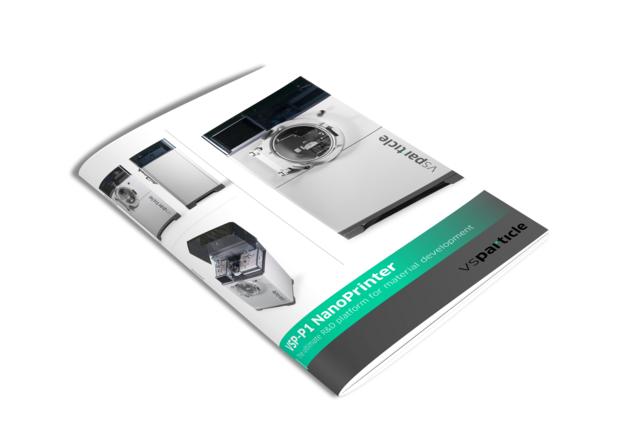Clients:
Dr. Joumana El Rifai, Assistant Professor of Physics
Research field: Nanostructures for photovoltaic and energy harvesting applications
Dr. Eliane Bsaibess, Assistant Professor of Physics
Research field: Novel ceramic oxides for energy applications (thermoelectric and caloric materials) and liquid crystal ferroelectric materials
Sciences and Engineering Department, Sorbonne University Abu Dhabi
Research tool:
VSP-P1 Nanoprinter, VSP-G1 Nanoparticle Generator, and VSP-A1 Deposition Accessory for Diffusion

Could you share some insights into the specific research topic you are currently exploring?
We are a team of professors at Sorbonne University Abu Dhabi, dedicated to the design, fabrication, and characterization of nanostructured layers for energy harvesting applications. Additionally, we are working on enhancing the thermoelectric and ferroelectric properties of these nanostructured materials.
Can you describe any challenges or bottlenecks you may have encountered during your research that VSP-P1 NanoPrinter and VSP-G1 Nanoparticle Generator helped you overcome?
We had plans to develop a characterization lab but lacked a fabrication tool. Consequently, we had to collaborate with various institutes or visit other research labs to prepare our samples. Having the VSP-P1 NanoPrinter and VSP-G1 Nanoparticle Generator on-site allow us to work more efficiently, enabling faster production and characterization of samples.
This technology provides pattern structures for various applications. This flexibility was crucial for our research needs. Our colleague Dr Stavros Christopoulos, who works on optical properties of materials, preferred the diffusion accessory of G1 for his applications, showcasing the system's versatility. This setup leverages our diverse backgrounds for better collaboration.
In what ways has the VSP-P1 NanoPrinter and VSP-G1 Nanoparticle Generator contributed to the success of your work in comparison to other methods or devices?
For the past few years, we have been using excimer lasers to develop nanostructured layers. This process is time-consuming, material-intensive, and requires a significant amount of energy to produce a single layer. With VSPARTICLE system, we are working more efficiently and producing samples faster for characterization. VSPARTICLE system stands out because it requires no clean room facility and wet chemical processing, therefore, easier for us to comply with regulations.

Could you elaborate on how this research tool will facilitate your research?
Our objective with the VSP-P1 NanoPrinter is to develop and refine novel material recipes aimed at enhancing the thermoelectric properties of these materials. Moreover, it will enable us to fabricate ferroelectric thin films and analyze their electrical characteristics, thereby broadening our research capabilities. Furthermore, we're exploring the VSP-P1 system to collect nanoparticles in liquid solutions, which can be used to modify liquid crystal properties.

Any final comments on how VSPARTICLE's technology can drive innovation?
Overall, our experience with VSPARTICLE has been positive, and we are excited about the future possibilities that the VSPARTICLE's technology offers for our research. Our team collaborates across various disciplines, and having this technology supports our broader research goals. This technology fills that gap, allowing us to cover more topics effectively. We would highly recommend VSPARTICLE to other researchers and institutions looking for a reliable and efficient fabrication tool for their materials science projects.

Nanoparticles at push of a button
VSParticle nanoparticle generators and printers enable researchers and material & device manufacturers to synthesize and deposit nanoporous materials in an easy, clean and efficient way.